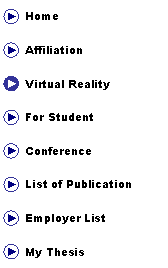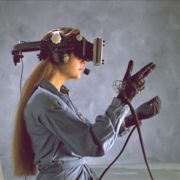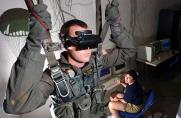


|
Your business tag line here. |
|
UB |

|
Virtual Reality |
|
The simulation of a real or imagined environment commonly is called as Virtual Reality (VR). The user can experience visually in the three dimensions of width, height, and depth and may have additional interactive experience in full real-time motion with sound and possibly with tactile and other forms of feedback. One of the forms of virtual reality is a 3-D image that can be explored interactively at a personal computer, usually by manipulating keys or the mouse so that the content of the image moves in some direction or zooms in or out. Most of these images require installing a plug-in for your browser. As the images become larger and interactive controls more complex, the perception of "reality" increases. More sophisticated efforts involve such approaches as wrap-around display screens, actual rooms augmented with wearable computers, and haptics joystick devices that let you feel the display images.
Virtual reality can be the simulation of real environments such as the interior of a building or a spaceship often with the purpose of training or education. It may also the development of an imagined environment, typically for a game or educational adventure Some products for creating virtual reality effects on personal computers include Bryce, Extreme 3D, Ray Dream Studio, trueSpace, 3D Studio MAX, and Visual Reality. One of the modeling tools is The Virtual Reality Modeling Language (VRML). This allows the artist to specify images and the rules for their display and interaction using textual language statements.
Formerly VR can only be run on a special dedicated expensive work station, however, the development of Graphics Processor Unit (GPU) make us possible to run on a standard Personal Computer (PC) with GPU. |

Heading |

|
Photo From Wikipedia |